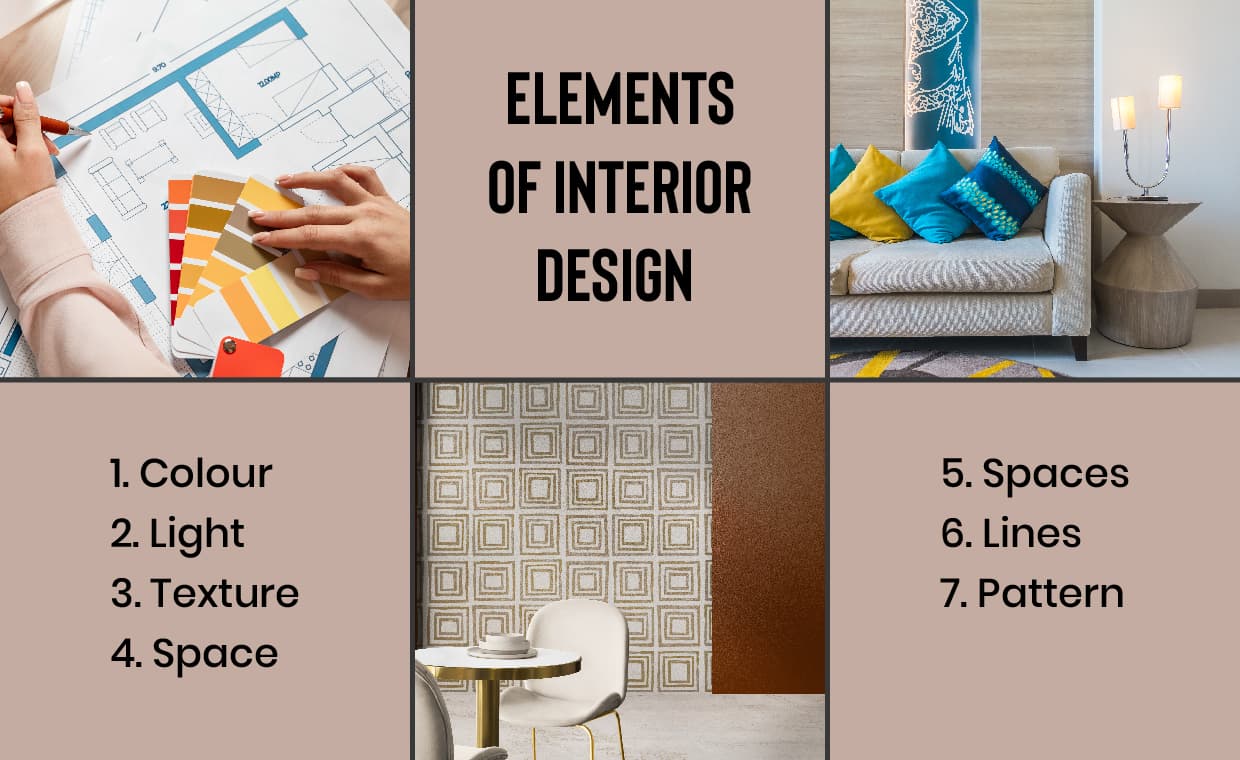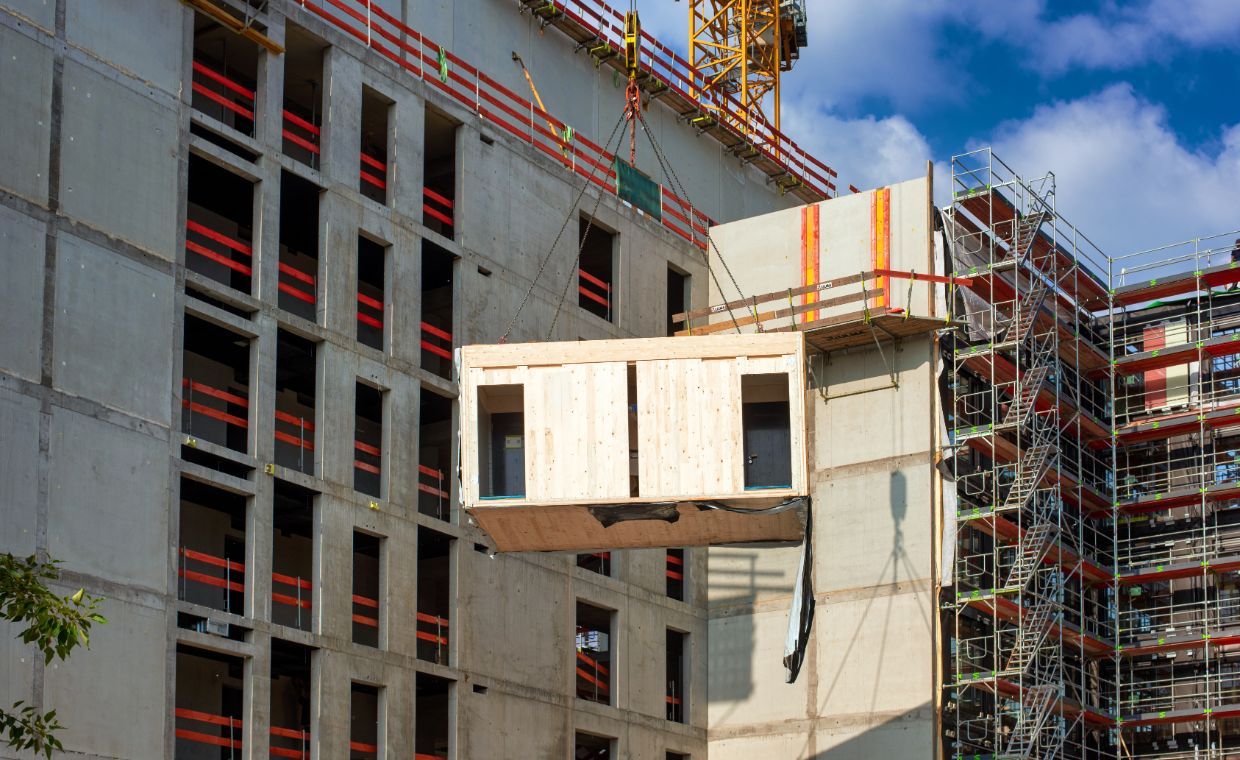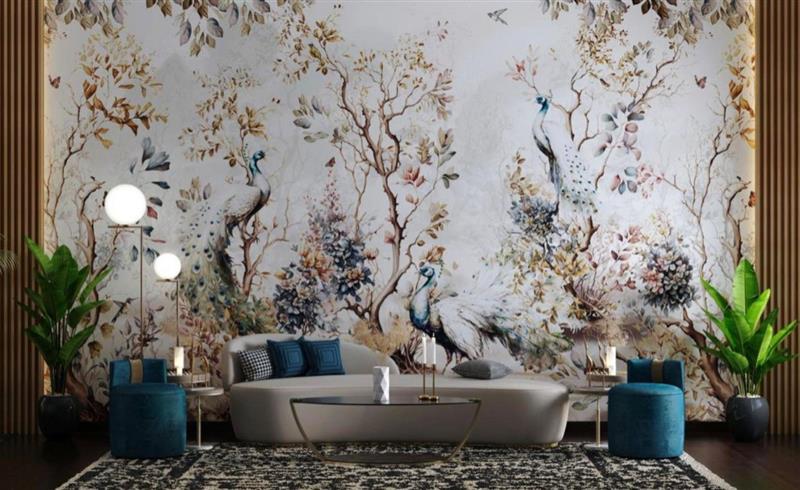
The essence of interior design will always be about people and how they live. A well-designed interior enhances your property’s aesthetic and economic value, making it better off in every sense. Explore the intricate dance of elements wherein imagination meets reality. Gharpedia helps you discover the key principles of interior designing where balance, harmony, rhythm, and unity combine to transform your interiors into an amazing expression of style and comfort.
What is Interior Design?

Detailed research, meticulous planning, designing, and creating aesthetically pleasing, and practical spaces is known as interior design. A professional interior designer makes recommendations on how to improve the user experience and decorate interiors with varied materials, furnishings, lighting, and décor to fit the client’s needs, lifestyles, and budgets.
According to the New York School of Interior Design, “Interior design is all about how we experience spaces. It’s a powerful, essential part of our daily lives and affects how we live, work, play, and even heal.”2

Interior design involves all sorts of graphical and visible elements of a room, such as flooring, ceilings, walls, furniture, lights, elevation, doors, windows, electronic items, showpieces, decorative items, and accessories. Furthermore, it also involves hidden elements such as electric wiring, plumbing, POP, cement and plaster, fitments, cabinets, and hardware.
Primarily, an interior designer uses technical and specialised knowledge to plan the space to best suit the client’s requirements, based on the existing vector space and natural framework. These standards enhance harmonious interiors that convey character. This article covers a few fundamental components that interior designers must consider.
Core Elements of Interior Designing
When designing a space or area from scratch, there are seven key elements that most interior designers rely on. Functional space acts as the base of interior design. These are the elements to keep a check on.
01. Element of Colour

You can employ colours as a contrasting or complementary element. It gives a room vitality while determining a space’s tone and atmosphere. Depending on the hue you choose for your décor, you can make a space feel cosier or larger. When it comes to home décor, choosing the right colour for a space can be difficult, but there are two important things to keep a check on before beginning your colour hunt. The first is the size of the space that needs to be worked with; covering smaller spaces with brighter hues, and larger areas with darker hues. Dark colours are a fantastic choice in large spaces because of their scope.
For instance, pale yellow, light orange, and similar hues provide a warm and welcoming impression in a room. These colours go well in smaller rooms or spaces that don’t receive a lot of sunlight. Conversely, cool tones like blue, and green create a cosy and tranquil atmosphere.
02. Element of Light

There is a reason why the term “mood lighting” often crops up in conversations about interior design. Light can profoundly affect mood and feelings, influencing our physiology and even leaving a mark on our thoughts. It’s a known fact that darkness can have a negative psychological impact on people. Hence, it makes sense to invest in a well-lit area.
Lighting should be both practical and pretty. Consider light as one of the elements of design, taking into account both the natural light and the artificial lighting. Using natural light wherever possible is a great option because it has higher quality and is far more energy efficient. One should also try to be creative with different types of lighting.
For example, the kitchen and laundry area should be bright throughout, while the area and home theatre areas should have more focused lighting.
In the trending world, LED lights don’t just come with dimmers, but they also come with options to switch from white to yellow light and even with as many options of colours as one desires under the sun.
03. Element of Texture

The fundamental purpose of texture is to enhance depth and interest. Texture in interior design can come from the texture of a wall or even floor (smooth, matte, glossy), the overstuffed (plush like velvet, soft as satin, calming as wood), and even flooring (marble or concrete). Adding colour, texture, and patterns is an easy way to rejuvenate a space that needs a major design upgrade.
Wallpapers and wall coverings are another way to introduce texture into a space and create the magic of intensity wherever required.


There are two types of textures in interior design; visual texture and actual texture
- Visual textures are in appearance only, such as marble, tiles, plain flooring, etc.
- Actual textures are both seen and felt on walls, such as velvet, satin, wooden texture, etc.
For instance, the textured stone accent wall becomes the focus of the kitchen, adding visual and brick texture to create a visually soothing experience.
Textures become striking when you use contrasting paints, such as matte and glossy, or when you apply metallic paints regardless of the textured surface. Metallic, glossy, and matte work accordingly.
04. Element of Space

An important element of interior design is space. Space is what a blank canvas is to an artist, he can draw anything and everything on that canvas. The first thing interior designers do when they visit the space they’re styling is look at it to get a sense of dimensions. Striking a balance between positive and negative makes it feel inviting and welcoming.
05. The Idea of Positive and Negative Space Needs More Stress

Positive space in interior design is the space occupied by objects – things, furniture, floor lamps, plants, rugs, curtains, decorative items, etc.
Whereas negative space in interior design is the opposite – it is all the space between these objects left empty so you can comfortably get around a room and let the room breathe. But in the process of breathing, one leaves too much space, creating more of a negative vibe. The vibe has everything to do with space in interior design.
06. Element of Lines

Lines bring structure, creativity, and a sense of orientation. You can use them in whichever direction the eyes run. There are three kinds of lines: horizontal, vertical, and dynamic. Horizontal lines create a sense of stability in a room, such as in tables, chairs, and other similar furnishings. Vertical lines are typically from doors, windows, and tall structures like bookcases, dressing areas, etc. Examples of dynamic lines are a staircase, the basement of the staircase, etc.
For example, lines can also be horizontal or even dynamic like curves and zigzags. But you can use such lines to decorate a room rather than guide the basic design of a space, which comes under decoration and not designing the space.
Core Principles of Interior Designing

When the basic interior design principles are known, one can transform any space to look fabulous in no time. Walking into a well-designed room, one can sense how everything feels cohesive and right.
Let’s refine our eyes for identifying compelling design by presenting it in the six key principles of interior designing:
Principle of Balance in Interior Design

Achieving postures that are pleasing to the eyes is the essence of balance. Balance creates a feeling of equilibrium. Traditional interior design reintegrates harmonious balance, a technique that attempts to make both sides of the room mirror one another.
You can balance lines, colours, forms, and textures with asymmetrical or informal weights without precise repetition. For instance, you can balance a sofa by placing two chairs on the other side, but not the other way around.
Principle of Rhythm in Interior Designing

A rhythm sets the optical movement of the room’s design. As in music, rhythm in design is all about making patterns of repetition and demarcation to create optical interest. Repetition is a technique that utilises the same aesthetic elements, like maintaining the fixture or the design’s aspect and quality.
We have also shared a detailed blog on the importance of rhythm in architecture.
Principle of Harmony in Interior

Harmony is raising the elements to act together to create a conquered message. Just as rhythm can create excitement, harmony creates a sense of reposefulness.
For example, one can create harmony by using just one colour, even though the forms differ greatly in shape, size, pattern, and texture.
Principle of Unity in Interior Design

Unity is the underlying theme that keeps the big picture in paradigm, the principle modern interior designers hold as most significant.
The focus of unity insists on the need to have the other principles, balance, scale, rhythm, focus, contrast, and harmony, complement each other well to achieve sustainable design harmony. Unity underlines the need to see design made up of a sequence of aesthetic schemes that work to achieve homogeneity, right from the colours up to the shape of the fixtures.
Principle of Scale and Proportion

Proportion is the quotient between the size of one part to another, and scale is how the size of one object connects to another or to the space in which it is placed.
Some proportional relationships are more satisfying than others. For illustration, a large, overstuffed section in a small room will be out of scale.
Principle of Focus in Interiors

Focus is about drawing attention to a room’s key aesthetic points.
These key points should work as the design’s main visual attraction while all the other details, like colour, scale, balance, proportion, and harmony will serve as the metaphorical spotlight that will dramatise the room’s focus. In recent research, in Miami, Florida, modern interior designers use this principle of strategically showcasing different areas in mansions, creating a cohesive look.
Innovative Hacks to Reduce the Cost of Interior Designing
An experienced interior designer will also emphasise how to save on interior design costs without losing the quality of their work.
Some hacks are as follows:
Restoring and Reusing Vintage Furniture
Reusing and refinishing antique/vintage furniture is a highly cost-effective way to decrease the cost of interior design for your home.
Use Wallpapers Instead of Painting Walls
Using wallpapers is a cost-effective and great idea. Wall paint is expensive; however, wallpaper is an excellent option because it provides the same aesthetic treat at a much lower cost.
A Sofa Daybed
A sofa daybed is the ideal two-in-one item for quickly transforming any room into an area for sitting and sleeping with ease. It can also utilise a daybed for work by bringing up a C-table for a laptop, and who can resist working from a sofa that also serves as a bed in the meantime?
Conclusion
On a final note, we hope we have got you covered on the key principles of interior designing. Contrary to what some may think, interior design is an art form. Many people think that one can present art only on tangible surfaces such as paper or canvas. You can turn any room into a work of art with a little creativity and imagination, focusing on the result, which may be called interior design.
FAQs
01. What is the difference between Interior Designing and Decoration?
Interior designing is the art and science of understanding people’s behaviour to create functional space in interiors, while decoration furnishes and beautifies the space with decorative elements.
Here we share a detailed guide on the difference between an interior designer and decorator:
To Whom Are You Hiring? – Interior Designer or Decorator!!!
02. What factors influence Interior Design?
As many as mentioned above such as Space, light, color, line, texture, emphasis, etc.
03. What are the benefits of Interior Design?
Maximizing the amount of available space and making the most out of it is one of the benefits of interior design followed by many.
Image Courtesy : Image 12, Image 13,Image 14, Image 16, Image 17, Image 18
Author Bio
Harsh Ved – I am a civil engineer, working as a site engineer and a freelance content writer. I hold a Master’s degree in Construction Engineering and Management. My keen interest lies in writing and research work. I have also written a research paper on “Building Integrated Photovoltaics” that is published in IRJET Journal.






























